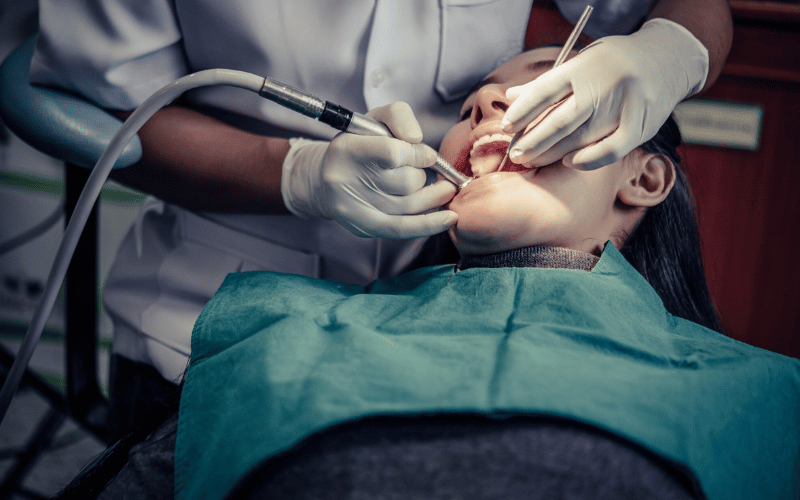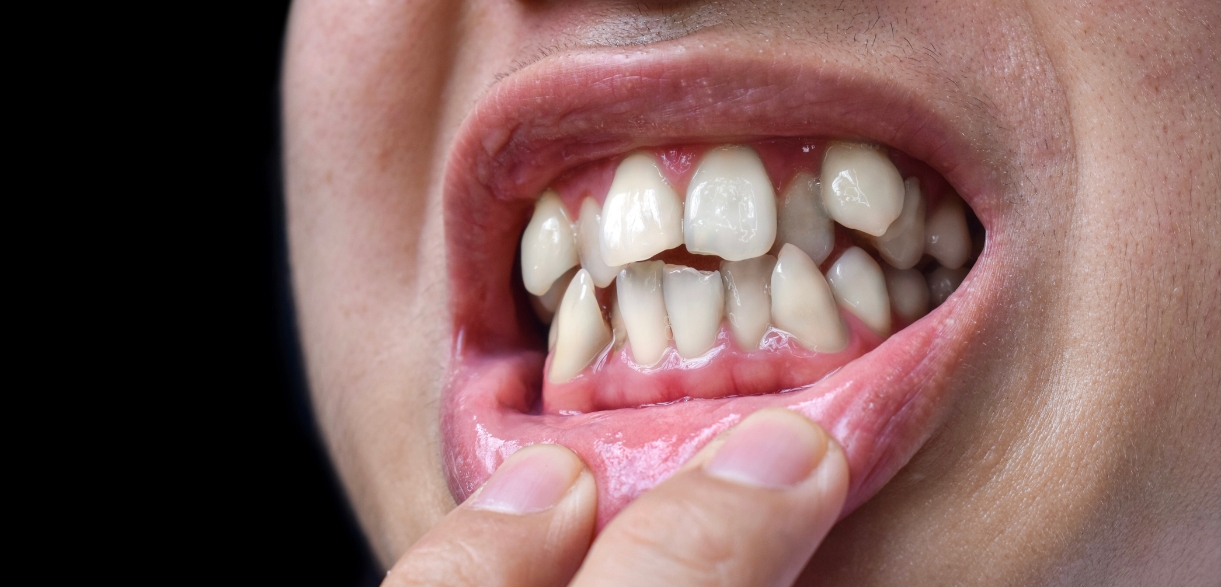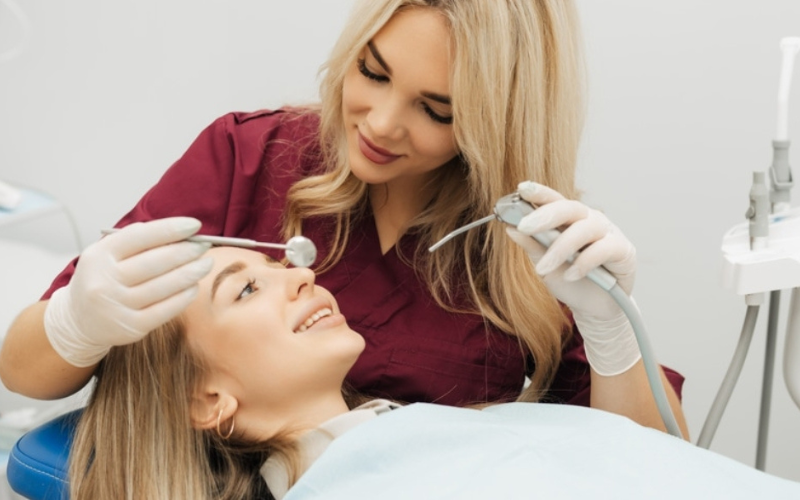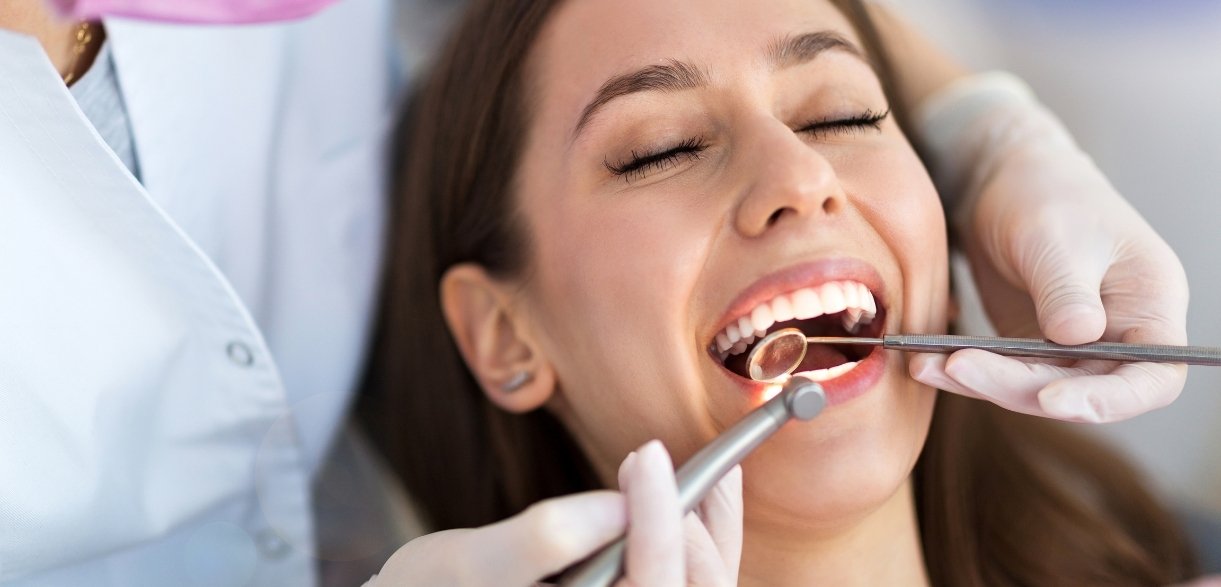1520 Green Oak Place, Suite B Kingwood, Tx 77339
Does Tooth Extraction Causes Facial Changes?

Common concerns about tooth extraction and facial changes arise from the fear of potential alterations to one’s appearance. Patients often worry about whether tooth extraction will result in noticeable changes in their facial structure or aesthetics. This concern is especially prominent for extractions involving prominent teeth or those affecting the jawline. Understanding the relationship between tooth extraction and facial changes is crucial for alleviating these concerns and making informed decisions about dental procedures. In this blog, we will delve into this topic to clarify and dispel any misconceptions surrounding the effects of tooth extraction on facial appearance.
Types Of Tooth Extraction
1. Simple Extraction: Typically performed on teeth visible in the mouth. The tooth is loosened with an elevator tool and then removed with forceps.
2. Surgical Extraction: Involves the removal of teeth that are not easily accessible or may be impacted, such as wisdom teeth. This procedure often requires an incision in the gum tissue and possibly sectioning the tooth for removal.
3. Impacted Tooth Extraction: It occurs when a tooth fails to emerge fully through the gum line, commonly seen with wisdom teeth. Surgical extraction is often necessary to remove impacted teeth.
4. Multiple Tooth Extraction: Involves the removal of more than one tooth during a single procedure. This may be necessary due to severe decay, overcrowding, or denture preparation.
5. Root Canal Extraction: In cases where a tooth is severely infected or damaged beyond repair, extraction of the entire tooth, including the root, may be necessary to prevent further complications.
Factors influencing the need for extraction
1. Dental Decay: Tooth decay, or dental caries, is one of the most common reasons for tooth extraction. When decay reaches an advanced stage and compromises the tooth’s structural integrity, extraction may be necessary to prevent further damage or infection.
2. Periodontal Disease: Advanced gum disease, or periodontitis, can destroy the supporting tissues and bones around the teeth. In severe cases, tooth extraction may be required to prevent the spread of infection and preserve overall oral health.
3. Trauma or Injury: Accidents or trauma to the mouth can result in fractured or severely damaged teeth. In some cases, the extent of the injury may be beyond repair, necessitating extraction to prevent pain and complications.
4. Impacted Wisdom Teeth: Wisdom teeth, also known as third molars, commonly become impacted due to lack of space in the jaw or improper eruption angle. Impacted wisdom teeth can lead to pain, infection, and damage to adjacent teeth, often requiring extraction.
5. Orthodontic Treatment: In cases of severe crowding or malocclusion, tooth extraction may be part of orthodontic treatment plans to create space for proper alignment of the remaining teeth. This strategic extraction helps improve the overall function and aesthetics of the smile.
Does Tooth Extraction Cause Facial Changes?
Tooth extraction can lead to immediate and long-term facial changes, though the extent varies based on several factors. Direct effects like swelling, bruising, and temporary alterations in facial appearance are common post-extraction. Long-term impacts include bone loss, tooth shifting, and changes in jaw structure, especially in cases of multiple or significant extractions. Factors influencing these changes include the location and type of tooth extracted, pre-existing dental conditions, and the age and overall health of the individual. While extraction can result in facial changes, consulting with a dentist can help mitigate these effects and explore suitable treatment options.
Facial Changes After Tooth Extraction
A. Immediate Effects:
1. Swelling: Swelling of the surrounding tissues is a common immediate effect after tooth extraction. It occurs due to the body’s natural inflammatory response to the trauma of the procedure and typically peaks within 48 hours before gradually subsiding.
2. Bruising: Some individuals may experience bruising around the extraction site or nearby face areas due to minor bleeding during the procedure. This bruising usually resolves within a few days as the body reabsorbs the blood.
3. Temporary Changes in Facial Appearance: The extraction process can temporarily alter facial appearance, especially if the tooth is prominent. This may include slight asymmetry or changes in the contours of the cheeks or lips, which typically resolve once the swelling and bruising subside.
B. Long-Term Effects:
1. Bone Loss: Tooth extraction can lead to bone loss in the jawbone surrounding the tooth socket. Without the stimulation provided by the tooth’s roots, the surrounding bone may gradually resorb over time, potentially leading to changes in facial structure and integrity.
2. Shifting of Teeth: The absence of a tooth due to extraction can cause neighbouring teeth to shift or tilt into the space over time. This shifting can affect the alignment of the teeth and may result in bite problems or aesthetic changes in the smile.
3. Effects on Jaw Structure: In some cases, especially with multiple tooth extractions, the loss of teeth can impact the overall structure and stability of the jawbone. Over time, this may contribute to facial shape and contour changes, particularly in the jawline area.
Factors Influencing Facial Changes
A. Location and Type of Tooth Extracted:
– The location and type of tooth extracted play a significant role in determining the extent of facial changes. Extraction of front teeth, especially those in the upper jaw, may have more noticeable effects on facial aesthetics due to their visibility.
– Teeth in the back of the mouth, such as molars, may not have as pronounced an impact on facial appearance since they are less visible. However, their extraction can still affect jawbone integrity and dental alignment, indirectly influencing facial structure.
B. Pre-existing Dental Conditions:
– Pre-existing dental conditions, such as gum disease or severe decay, can contribute to facial changes after tooth extraction. Advanced periodontal disease can result in bone loss around the affected teeth, which may exacerbate facial changes following extraction.
– Additionally, the condition of the surrounding teeth and tissues can influence the healing process and subsequent changes in facial appearance post-extraction.
C. Age and Overall Health of the Individual:
– The age and overall health of the individual undergoing tooth extraction can impact the body’s ability to heal and adapt to changes in facial structure. Younger individuals generally have better bone density and healing capacity, which may mitigate some of the long-term effects of extraction.
– Conversely, older individuals or those with underlying health conditions may experience more significant facial changes due to reduced bone density, compromised healing, or other health-related factors.
These factors interact with one another and individual variations to determine the extent and nature of facial changes following tooth extraction. Consulting with a dental professional can provide personalized guidance and treatment options tailored to each individual’s unique circumstances.
Wrap Up!
In conclusion, while tooth extraction can lead to facial changes, understanding the process and factors involved is key to managing expectations. At Dentistry Of Kingwood, our team prioritizes personalized care to minimize any potential impacts on facial aesthetics. Whether it’s addressing immediate concerns like swelling and bruising or mitigating long-term effects such as bone loss and teeth shifting, we’re committed to ensuring optimal oral health and preserving facial structure. Trust in our expertise and comprehensive approach to dental care. Schedule your consultation today and embark on a journey towards a healthier smile with Dentistry Of Kingwood!







